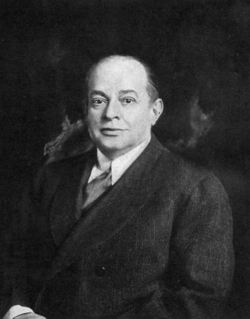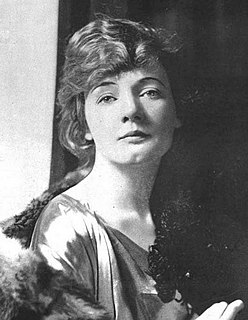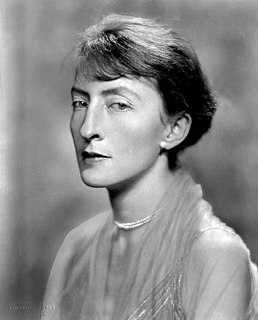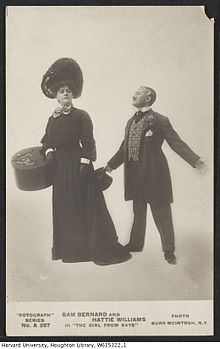
Lionel Barrymore was an American actor of stage, screen and radio as well as a film director. He won an Academy Award for Best Actor for his performance in A Free Soul (1931), and remains best known to modern audiences for the role of villainous Mr. Potter in Frank Capra's 1946 film It's a Wonderful Life.

John Barrymore was an American actor on stage, screen and radio. A member of the Drew and Barrymore theatrical families, he initially tried to avoid the stage, and briefly attempted a career as an artist, but appeared on stage together with his father Maurice in 1900, and then his sister Ethel the following year. He began his career in 1903 and first gained attention as a stage actor in light comedy, then high drama, culminating in productions of Justice (1916), Richard III (1920) and Hamlet (1922); his portrayal of Hamlet led to him being called the "greatest living American tragedian".

Ethel Barrymore was an American actress and a member of the Barrymore family of actors. Barrymore was a stage, screen and radio actress whose career spanned six decades, and was regarded as "The First Lady of the American Theatre". She received four nominations for the Academy Award for Best Supporting Actress, winning for None but the Lonely Heart (1944).

Maude Ewing Adams Kiskadden, known professionally as Maude Adams, was an American actress who achieved her greatest success as the character Peter Pan, first playing the role in the 1905 Broadway production of Peter Pan; or, The Boy Who Wouldn't Grow Up. Adams's personality appealed to a large audience and helped her become the most successful and highest-paid performer of her day, with a yearly income of more than one million dollars during her peak.

Charles Frohman was an American theatre manager and producer, who discovered and promoted many stars of the American stage. Notably, he produced Peter Pan, both in London and the US, the latter production starring Maude Adams who would be strongly identified with the part.

John Drew Jr., commonly known as John Drew during his life, was an American stage actor noted for his roles in Shakespearean comedy, society drama, and light comedies. He was the eldest son of John Drew Sr., who had given up a blossoming career in whaling for acting, and Louisa Lane Drew, and the brother of Louisa Drew, Georgiana Drew, and Sidney Drew. As such, he was also the uncle of John, Ethel, and Lionel Barrymore, and also great-great-uncle to Drew Barrymore. He was considered to be the leading matinee idol of his day, but unlike most matinee idols Drew's acting ability was largely undisputed.

Dolores Costello was an American film actress who achieved her greatest success during the era of silent movies. She was nicknamed "The Goddess of the Silent Screen" by her first husband, the actor John Barrymore. She was the mother of John Drew Barrymore.

Elsie Louise Ferguson was an American stage and film actress.

The Corn Is Green is a 1938 semi-autobiographical play by Welsh dramatist and actor Emlyn Williams. The play premiered in London at the Duchess Theatre in September 1938; with Sybil Thorndike as Miss Moffat and Williams himself portraying Morgan Evans, the West End production ran in all for 600 performances. The original Broadway production starred Ethel Barrymore and premiered at the National Theatre in November 1940, running for 477 performances.

Georgiana Emma Drew, a.k.a.Georgie Drew Barrymore, was an American stage actress and comedian and a member of the Barrymore acting family.

Henrietta Foster Crosman was an American stage and film actress.

The Witness for the Defense is a 1919 American silent drama film directed by George Fitzmaurice and starring Elsie Ferguson, Warner Oland, and Wyndham Standing.

Martha Hedman was a Swedish-American stage actress popular on the Broadway stage.

Clare Eames was an American actress and stage director, and the first wife of playwright Sidney Howard.

William Courtenay was a noted Broadway star and later film actor. He was born William Hancock Kelly. At age 19 in 1894, before his Broadway career took off, Courtenay appeared in Alexander Black's slide show Miss Jerry. This was a sort of alternative entertainment to a new device by Thomas Edison called a Kinetoscope à la moving pictures.

Our Mrs. McChesney is a lost 1918 American silent comedy-drama film produced and distributed by Metro Pictures, directed by Ralph Ince, and based on the 1915 play by Edna Ferber and George V. Hobart which starred Ethel Barrymore.

Maggie Pepper is a lost 1919 American silent comedy-drama film directed by Chester Withey and starring Ethel Clayton. This film is based on a hit 1911 play by Charles Klein which was a winning success for stage actress Rose Stahl at the Harris Theatre.

Ethel Barrymore was an American actress of stage, screen and radio. She came from a family of actors; she was the middle child of Maurice Barrymore and Georgie Drew Barrymore, and had two brothers, Lionel and John. Reluctant to pursue her parents' career, the loss of financial support following the death of Louisa Lane Drew, caused Barrymore to give up her dream of becoming a concert pianist and instead earn a living on the stage. Barrymore's first Broadway role, alongside her uncle John Drew, Jr., was in The Imprudent Young Couple (1895). She soon found success, particularly after an invitation from William Gillette to appear on stage in his 1897 London production of Secret Service. Barrymore was soon popular with English society, and she had a number of romantic suitors, including Laurence Irving, the dramatist. His father, Henry Irving, cast her in The Bells (1897) and Peter the Great (1898).

Ernest E. Lawford (1870–1940) was an English stage and film actor.

May Davenport Seymour Eckert (1883–1967) was an American stage actress descended from a long line of famous actors and later a patron of the arts scene in New York. She was the daughter of actor and stage manager William Gorman Seymour and actress May Marian Caroline Davenport. She had three siblings. Her maternal grandparents were E. L. Davenport and Fanny Vining Davenport, two famous mid-19th century actors. Her mother May Marian was a sister of famous 19th-century star Fanny Davenport and Hollywood actor Harry Davenport. May Eckert married William Stanley Eckert in 1908; one of their children was actress Anne Seymour who usually dropped her surname professionally.






















